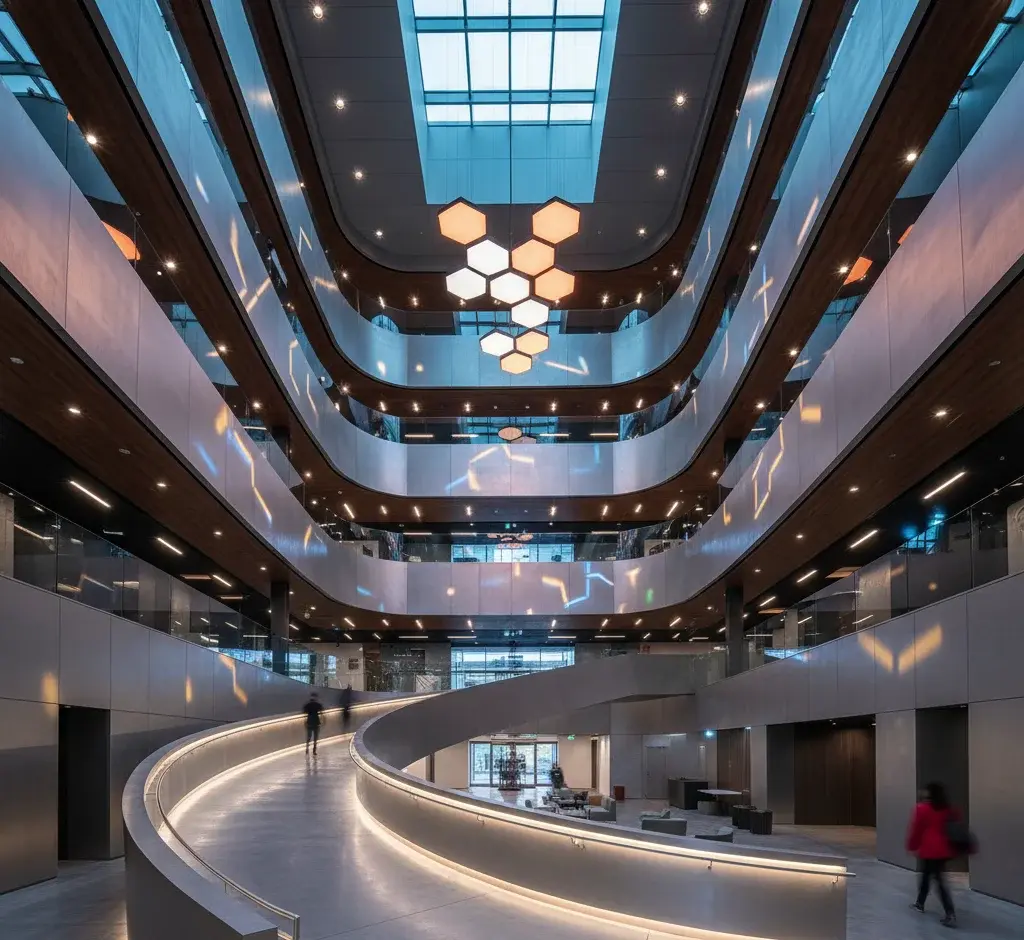BLOG

There are many types of lighting, and architectural lighting is the most important of these. Architectural lighting can be considered a type of lighting that defines the function, aesthetics, and structural features of a space through light. It not only meets visual needs; it also highlights volumes, shapes the appearance of materials and textures, and determines how the space is perceived.
Three main lighting layers are generally defined:
The combination of these layers creates depth and legibility within the space by regulating shadow and brightness relationships. Technically, parameters such as light intensity, color temperature, luminaire selection, and light direction are the fundamental components of architectural lighting.
When preparing an architectural lighting plan, you must first clarify how the space will be used and whether its function will change in the future. Accurately defining usage scenarios helps the lighting system adapt to both current needs and future possibilities. You should also ensure that the design aligns with the identity of the space or brand; the color, intensity, and direction of light directly affect the feeling a space evokes. Certain technical criteria determine lighting performance. Criteria such as light level, uniformity, glare level, and color accuracy should be determined from the outset and adhered to throughout the project. This is important for both comfort and visual quality. Energy efficiency and maintenance requirements should also be considered; long-lasting fixtures and solutions that offer low energy consumption create long-term cost advantages. Planning control systems is also an important part of the process. Considering systems such as dimming, sensors, or timers from the outset will benefit you in terms of both ease of use and energy savings.
It is also necessary to establish good coordination with the electrical, interior design, and construction teams. This can prevent delays or additional costs during the implementation process. Another important consideration is ensuring the project complies with safety and standards. Planning details such as emergency lighting, escape route lighting, and exterior facade lighting in accordance with local regulations reduces the risk of future revisions. Finally, clarifying issues such as supply times, warranty terms, and spare parts availability from the outset will make post-implementation maintenance and operation much smoother.
In short, a sound architectural lighting plan should not only provide an aesthetically pleasing solution, but also a functional, economical, and sustainable one. Therefore, careful consideration of every step in the planning process is crucial for both the short- and long-term success of the project.
Architectural lighting is used in various areas depending on the function and aesthetics of the space. Indoors, it provides both general and accent lighting in offices, hotels, restaurants, and shopping malls, creating a decorative and comfortable environment. Outdoors, it highlights the structure on building facades, squares, parks, and bridges, supports nighttime security, and creates a visual identity. It is also preferred in museums, galleries, and exhibition spaces to display works accurately and effectively. In short, architectural lighting is applied to any interior or exterior space that enhances the visibility, function, and aesthetics of the space.
At Pamir Lighting, we consider both our customers' budgets and project needs when determining prices. While the complexity of the design, the size of the space, and the quality of the fixtures used influence prices, we always strive to provide efficient and sustainable solutions. By opting for energy-efficient products and long-lasting materials, we offer options that, while the initial investment may be slightly higher, will provide cost advantages in the long run. We design both high-quality and affordable lighting solutions for our customers, taking into account ease of installation, maintenance, and use.
For your architectural lighting needs, simply contact us!
OUR LATEST POSTS